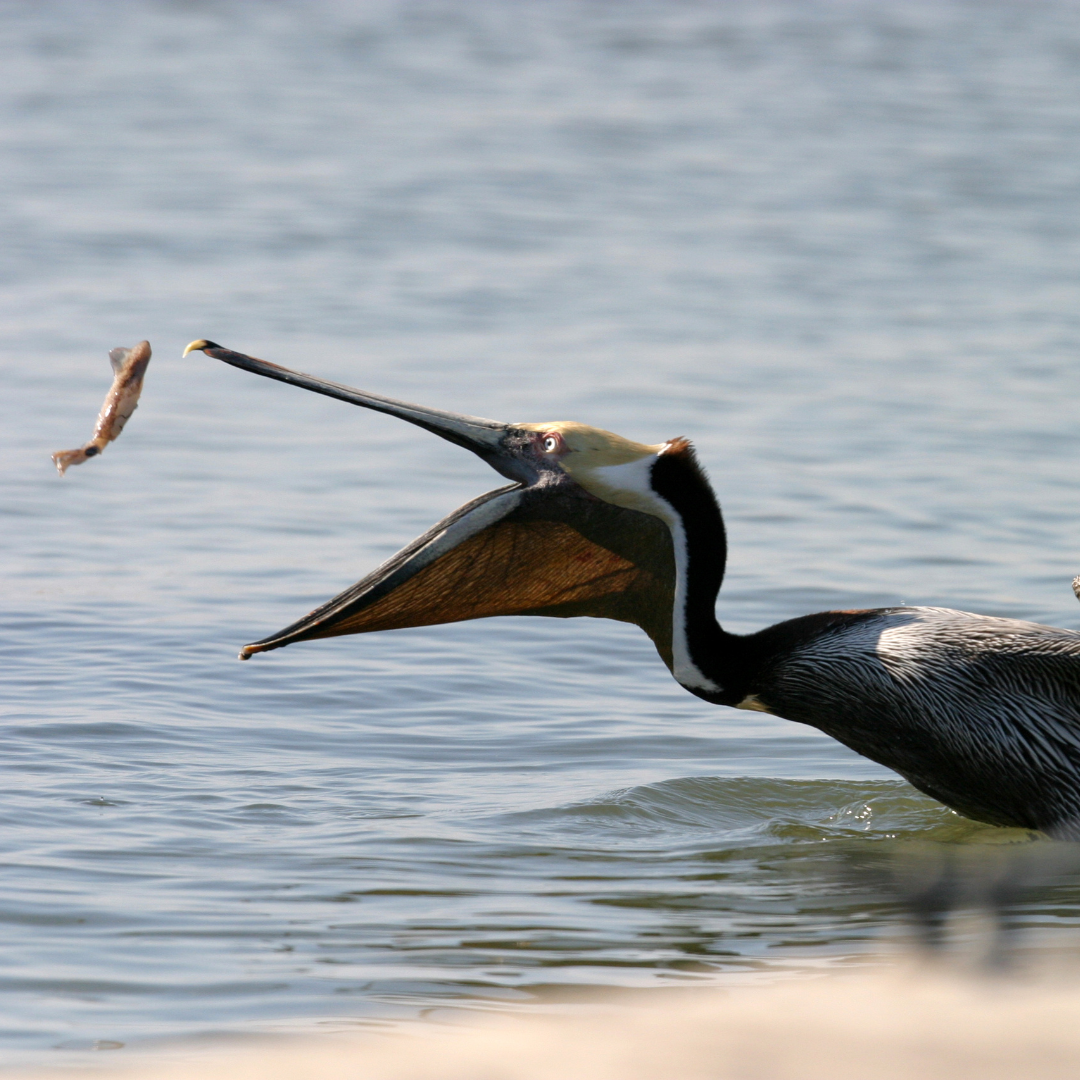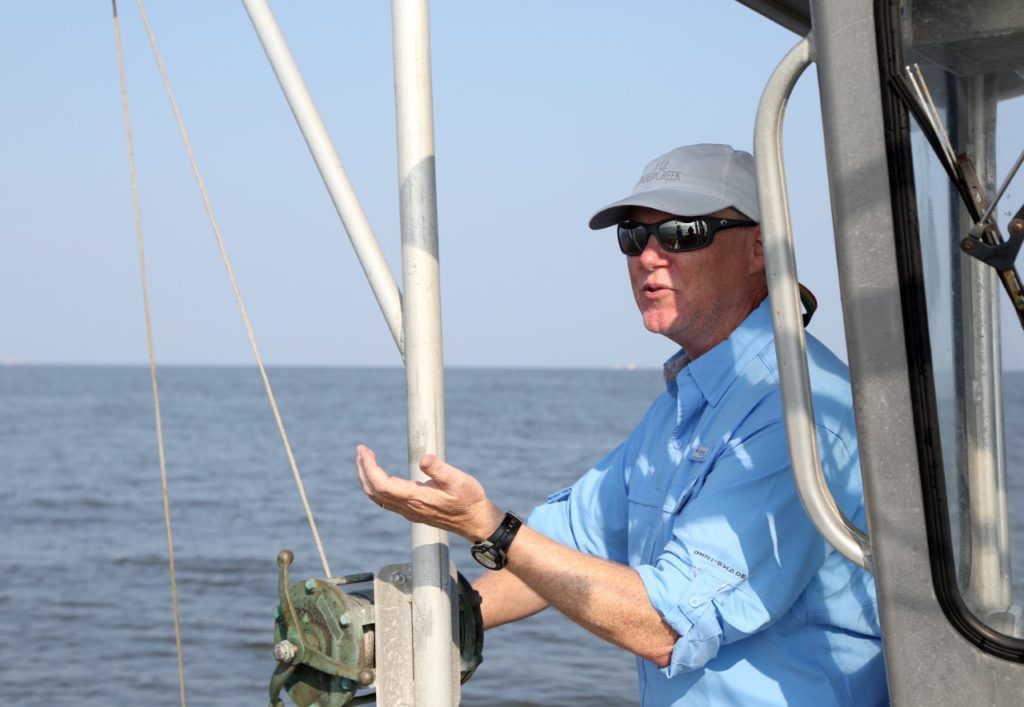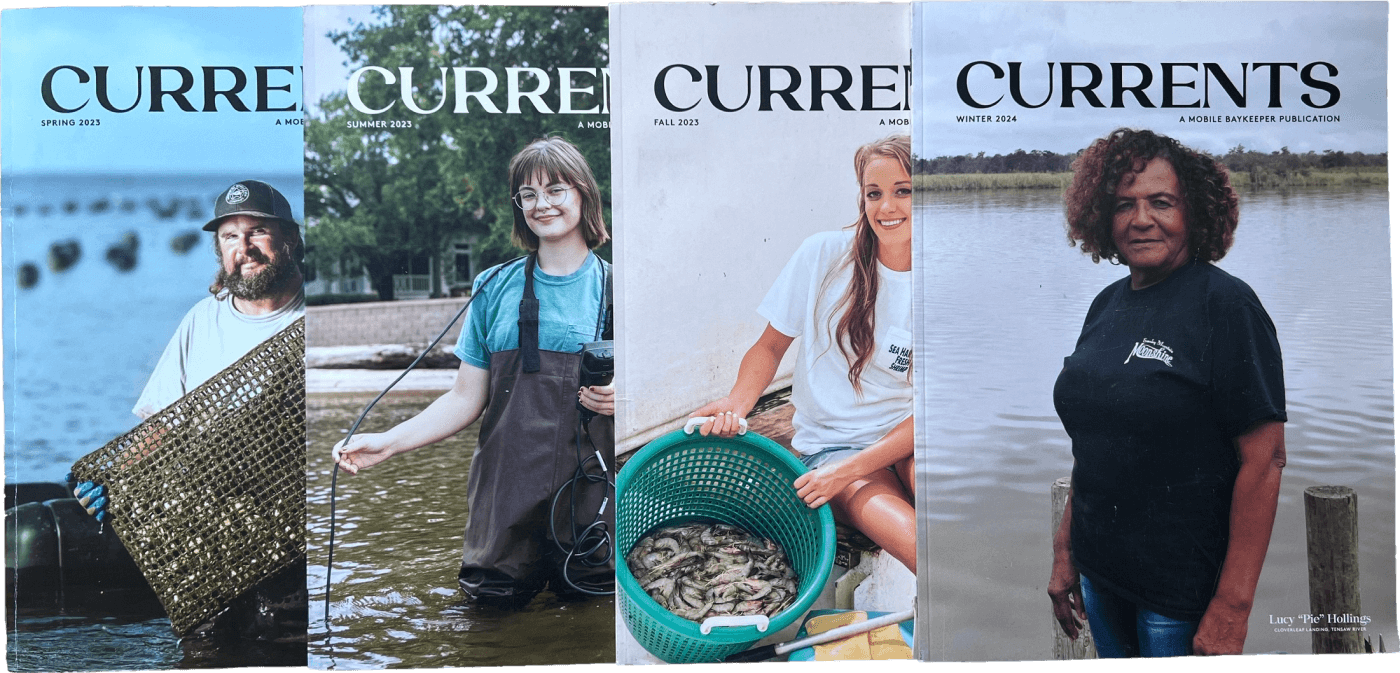
This article is from Mobile Baykeeper’s print quarterly, CURRENTS. The magazine is mailed to active members who have given more than $50 in 2023. To get on the magazine’s mailing list, donate here.
Dr. John Lehrter is an Associate Professor in the Department of Marine Sciences at the University of South Alabama and a Senior Marine Scientist at the Dauphin Island Sea Lab. Prior to joining the faculty at USA and DISL in August 2016, Dr. Lehrter was a Research Ecologist with the EPA Office of Research and Development. We spoke with him recently about the health of the Mobile Bay Watershed and what drew him to Coastal Alabama.
No, I didn’t. My dad was in the military, so we kind of moved all over and then came back to Alabama. When I was in college, I started coming down to the coast in the early ’90s and really just fell in love with it, and decided I wanted to do my graduate work here. I did my Masters and Ph.D. through University of Alabama, but all my research was down at the Dauphin Island Sea Lab.
I’ve been in the area since the early ’90s. I worked for EPA for 13 years, and that was over in Gulf Breeze and the Florida Panhandle. My wife’s from Mobile, so we’re pretty rooted here now.
I got a job working up in Alaska right after I graduated from undergrad and spent about three years up there on ships. And just all that time being on the water, looking at the water, that’s when I really knew that I wanted to be an oceanographer. And I came back here and my parents were coming down to Dauphin Island for a weekend and they asked if I wanted to tag along, so I did. And I came down and thought, ‘Oh, this is pretty cool, right here on the edge of a barrier island. And you’ve got the Gulf and the Bay and the marsh and the Delta.
It’s like death by a thousand cuts. It’s hard to just point at one thing. I mean, there certainly are places in the world where you can say, it’s this one polluter or maybe a mining operation or something that dominates the stress in the system. But for the most part, and this is why it’s so hard to manage these systems, it’s all these things that are happening simultaneously.
You’ve got population growth, land-use change, and changes in our river systems. The damming and the re-engineering of the hydrology, the deepening of the ship channel, and then pollution with just the population growth and runoff. So it’s this basket of things that are happening. And what makes it challenging and interesting from a scientific perspective is that it’s really difficult to take all of these things apart and see how they interact.
My main research emphasis is on oxygen in the water. If you look at the things that all life needs, oxygen is right up at the top of the list. If you don’t have adequate oxygen in the water, you’re just not going to have animals, period. Mobile Bay has a long history of jubilees. We call them jubilees because they run fish and crabs and flounder up on the beach. And that’s a good thing for humans, but it’s obviously not a good thing for those animals trying to escape the low oxygen water.
And so trying to understand where that problem occurs, how often it occurs, and what’s driving it is a main theme of my work. Is it related to nutrient pollution? Is it related to warming? Is it related to the deepening of the ship channel, which introduces more salt into the Bay that enhances the physical environment that allows low oxygen to occur? So yeah, we’re trying to address all those things.
A lot of misconceptions are related to the brown water. And that’s because we’ve got other places nearby that are so beautiful and so easy to contrast with visually. If we go down to Orange Beach, the water is very different. But the reality is that Mobile Bay is a river-dominated system. And probably it hasn’t always been as muddy as it is now, but it’s never going to have the kind of water clarity that we see in a lot of other places. So I think there is this misconception that it’s nasty or that it’s not swimmable because it’s brown.
One problem with being able to say whether it’s healthy or not is we don’t have a good baseline. No system really does. We’ve got all this anecdotal information from the two or three generations older than us about what the Bay used to look like. And it was very different. But we don’t have real data. So it’s always a really hard question when people ask you about the health of the Bay.
When you start looking at systems as big as Mobile Bay, there just are not that many worldwide. And there’s only maybe a handful of other systems that look like Mobile Bay. And frankly, at this point, there’s just no place on Earth that’s not human impacted.
We can certainly look over the last several decades and we can see trends. For example, we know based on long-term data that the prevalence of low oxygen is getting worse. But we lack data for many other water-quality variables, which makes it difficult to state the condition and whether it is changing.

The decimation of the seagrass in the Bay is often cited as a tell-tale indicator of pollution. But you told me earlier that the prevalence or lack of seagrass is more of a hyper-local issue, and not one that encompasses the whole watershed.
Seagrass has been used in a lot of other systems as a sort of bellwether because it requires really good water clarity. There are two ways the grasses can grow. They can grow submerged, for one. And in that case, they need good water clarity for the sunlight to reach them. But then there’s grasses that can grow in really shallow water where the blades actually lay on the surface of the water. And in that case, it doesn’t really matter what the water clarity is. So in our system, we have a lot of the latter, especially in the upper Bay and Delta.
If you went up in the Delta a few months ago, you would see what’scalled tape grass, Vallisneria americana. And it’s thick and really beautiful. It doesn’t mind the turbid water. And that kind of grass is really driven by how salty the Bay is. In years like this year, when we’ve had a lot of fresh water, a lot of river flow, it expands because it likes that lower salinity. And then in drought years it’ll just disappear or retreat up into the Delta. So those kind of grass beds really aren’t good indicators for water quality other than change in salinity.
But submerged grass beds are good indicators of water quality. My wife’s grandmother, who was in Point Clear going as far back as the 1920s, talked about how when she was younger there was submerged grass on the Point Clear shorelines. And now there is not, which indicates the water clarity has decreased and that we’ve gotten browner or more turbid water. So in that case, the loss of seagrass may be a good indicator of water quality change. And those grass beds are so important.
What we’ve learned with some of the aquatic species, such as speckled trout, is that there are early juvenile stages when they’re just tiny little fish, and they settle out into those grass beds almost exclusively. And so as we lose that habitat, a lot of critters that rely on such habitat to avoid predators and to find their prey are affected.
I think we all need to recognize that we are a part of the Earth system and not apart from it. Historically, because the earth was so bountiful, we always looked at nature as a system of infinite resources, right? When you look at fisheries in the ocean, it’s only been in the last 50 years or so that we’ve really recognized that humans can deplete those fisheries.
In order for humans to survive, we need these ecosystem services that are conducted everywhere by nature that produce food and fiber, produce oxygen, remove pollutants, etc. We just take those for granted, and we always have but I think if folks paid attention to this they would recognize that everything is connected.
We’ve been very blessed in Alabama. We’ve traditionally had low population density in the watershed. One of the reasons I love living here is just being able to get up in the Delta. Ten minutes from here and I can be in this vast wilderness that is not only aesthetically beautiful but also providing all of these essential life-support services for humankind and I think we take that for granted. But it’s not a guarantee that it’s going to be there in the future. So I think the average citizen just needs to be aware that we’re all connected to this, and that there are limits to growth and how much humans can exploit our resources.
